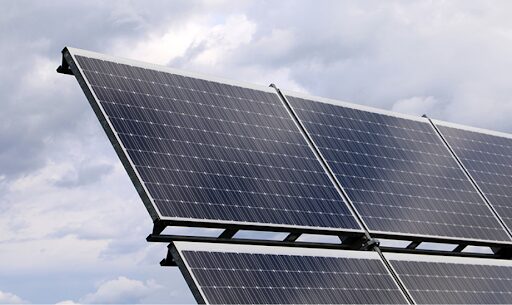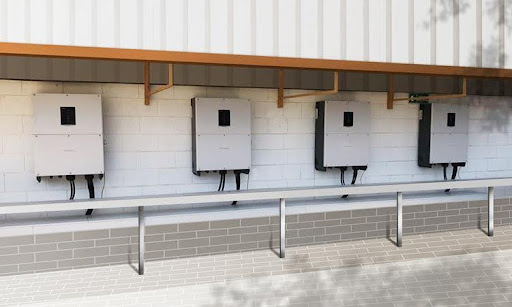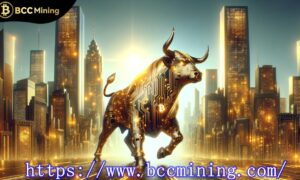Solar inverters are a central component of any solar power system. They convert the direct current (DC) generated by solar panels into alternating current (AC), which can be used by appliances and fed into the grid. The demand for solar power solutions is rapidly increasing in the commercial and industrial (C&I) sectors. Businesses seek cost-effective, scalable, and efficient systems to meet their energy needs. Among the different types of solar inverters, string inverters are often the best choice for C&I applications.
Types of Solar Inverters
Solar inverters are classified based on design and functionality. Here are the main types:
1. String Inverters
String inverters use a centralized design. Multiple solar panels are connected in series, forming a “string.” The combined DC output is sent to a single inverter for conversion into AC. These inverters are ideal for mid-to-large-scale installations, making them a common choice for C&I systems.
2. Microinverters
Microinverters are installed on individual solar panels. Each microinverter converts the DC output from a single panel into AC. This design is typically used in residential or small-scale systems, where shading or varying panel orientations are a concern.
3. Central Inverters
Central inverters are designed for utility-scale solar projects. They handle high-capacity systems by connecting multiple strings into a single, large inverter. These inverters are not suitable for smaller installations due to their size and complexity.
4. Hybrid Inverters
Hybrid inverters combine solar power with battery storage. They allow energy to be stored and used during periods of low sunlight or high demand. These inverters are versatile and increasingly popular in both residential and C&I systems.
String Inverters vs. Microinverters
Choosing between string inverters and microinverters depends on the project’s needs. Below is a comparison:
| Aspect | String Inverters | Microinverters |
| Efficiency and Cost | High efficiency at a lower cost. Ideal for large-scale systems. | Higher cost per watt. Better for small-scale systems. |
| Scalability | Easily scaled for mid-to-large installations. | Limited scalability due to higher costs. |
| Maintenance | Centralized maintenance reduces complexity. | Requires servicing of individual units. |
| Shading Performance | Output of the string can drop if one panel is shaded. | Panels operate independently, minimizing shading impact. |
For large C&I systems, string inverters strike the right balance between cost, efficiency, and scalability.

Why String Inverters Are Best for C&I Applications
1. Cost-Effectiveness
String inverters are more cost-effective than microinverters. They require fewer components and less wiring, reducing installation costs. For large-scale systems, centralized control eliminates redundancy, further lowering expenses. This makes them ideal for commercial and industrial projects where budget optimization is key.
2. Scalable Design
String inverters are perfect for growing energy systems. Their high power output capacity supports large arrays of solar panels. Businesses can expand their installations as energy needs increase. The centralized design also simplifies system management, enabling seamless upgrades.
3. Advanced Features
Modern string inverters come with advanced features. For example, products from Sungrow offer integrated monitoring and remote diagnostics. These features enhance system performance and reduce downtime. Many models also comply with grid standards, ensuring smooth integration with the energy grid. Additionally, support for smart grid functionalities makes them future-proof solutions.
Why Sungrow Stands Out
Sungrow is a global leader in solar inverter technology. Their string inverters are widely used in C&I applications due to their reliability and performance. Here’s what sets Sungrow apart:
- Proven Efficiency: Sungrow string inverters deliver high conversion efficiency, maximizing energy output.
- Cutting-Edge Technology: Features like remote monitoring and real-time diagnostics simplify system management.
- Reliability: Sungrow’s products are designed to withstand harsh conditions, ensuring durability in diverse environments.
- Custom Solutions: They offer models tailored to specific energy needs, including high-capacity inverters for large installations.
Choosing Sungrow ensures businesses benefit from innovative technology, long-term savings, and dependable support.

Conclusion
Solar inverters play a critical role in maximizing the performance of solar power systems. For C&I applications, string inverters are a cost-effective, scalable, and efficient solution. Compared to microinverters, they offer better value for large-scale projects, making them the preferred choice for businesses.
Sungrow string inverters stand out for their advanced features, proven performance, and reliability. By choosing the right inverter, businesses can harness the full potential of solar energy, reduce operational costs, and contribute to sustainability.
If you are considering solar power for your commercial or industrial project, string inverters provide the optimal combination of performance and affordability. Make the switch today and experience the benefits of clean, efficient energy





























